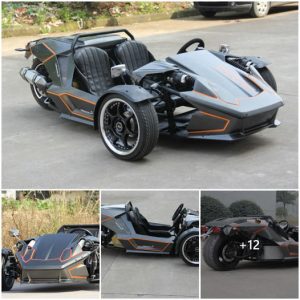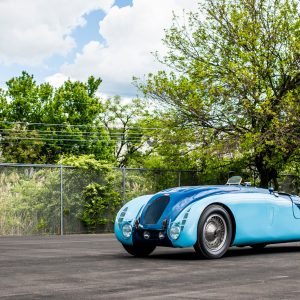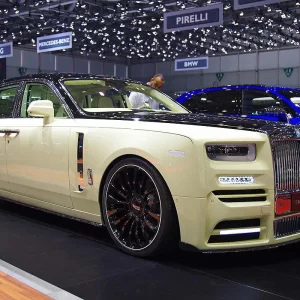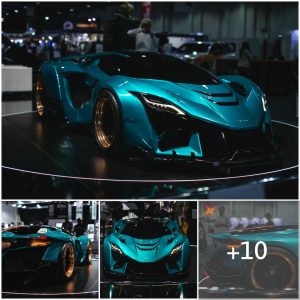We got a sneak peek at VW’s latest EV, an executive-feeling sedan with big tech improvements over the ID.4 crossover. But will it be enough?

You may recall that a couple of weeks ago, we asked the question it seems everyone was thinking: what happened to Volkswagen’s cool? In the thousands of comments and emails we received, there was one consistent theme—that for a number of reasons and with a few exceptions, VW just doesn’t make compelling cars anymore.
So enter the 2025 VW ID.7, an upcoming midsize electric sedan with the dual task of showing people VW’s still got it and keeping the company’s EV pivot on solid footing. As the latest electric car to be developed on the modular MEB platform, it shares some basic similarities with the VW ID4 crossover and ID Buzz van. But it also represents the sum total of everything VW’s learned about building EVs up to this point, and thus there are significant differences in the technology and powertrain worth knowing.

Though the ID.7 is still in development—don’t expect it on sale in America until mid 2024 at the earliest—VW’s proud enough of what it’s got that it let me take a crack at a camouflaged prototype last month. And while I can’t draw hard conclusions from a brief, supervised drive of a hand-built test car, early returns are positive. VW has something pretty interesting on its hands. Compelling? We’ll see.
Design tricks can make it hard to judge the size of cars in isolation today, so for comparison, the ID.7’s 195.3-inch length pretty much matches a Mercedes E Class sedan, but its wheelbase is four inches longer. Thanks to the 77 kWh lithium-ion battery under the floor, it’s also three inches taller than the Merc at a not insignificant 60 inches. That’s just a shade under some subcompact crossovers.


But tall sedan or not, the VW ID.7 is still a lot lower to the ground than the ID4. Its streamlined silhouette and aero tricks like automatic radiator shutters and a completely smooth underbody produce a stellar 0.23 drag coefficient, just 0.01 greater than the smaller Hyundai Ioniq 6 to which it will doubtlessly be compared. I can’t say anything about the final design, which will be revealed on April 17. But a close look at the camo reveals a lot of similarities with the ID Aero concept. The shape—well, it’s not as bold as the Hyundai, but it’s also less blobby than the Mercedes EQE. Full impressions to come.
That 77 kWh battery will be standard in America, while Europeans will eventually be able to spec an 86 kWh plank in the ID.7 Pro S trim. Both will be connected to VW’s latest electric motor on the rear axle—the radial flux APP550 (yes, time to start learning your e-motor codes), which sports a number of improvements. Stronger permanent magnets, a reworked stator with more copper windings, and a revised oil and water cooling system boost output to 282 horsepower and 402 pound-feet of torque, gains of 40% and 75% respectively over the ID4’s motor.
Revving to 13,000 rpm, it also features a two-stage gearset (not the same thing as the Porsche Taycan’s two-speed transmission) to improve higher-speed performance and efficiency. VW hasn’t confirmed an AWD version yet, but come on, use your imagination. And expect the ID4’s asynchronous front motor to drop in without issue. Conveniently, full power is available all the time at almost every state of charge—no caveats or boost buttons here.


Range is still a question mark, but VW says it’s targeting 382 miles on the WLTP cycle with the smaller battery. Call it low-mid 300’s when the stricter EPA gets its hands on it. Meanwhile the WLTP target for the bigger battery is an impressive 435 miles, though again, we’ll have to see how that shakes out stateside. Regardless, its 400-volt architecture means the ID.7 will be able to take on fast charging speeds of 170 kW to start, moving up to 200 kW with the bigger battery.
Behind the wheel with my VW chaperone on a 17-mile test loop, the ID.7 shows a lot of promise for what it is—a biggish, premium-lite sedan that probably weighs close to 4,500 pounds. Echoing what we’ve noticed in the ID4, the rear-wheel-drive ID.7 features very neutral handling. You’re not going to feel much mid-corner rotation or play in the chassis.
Steering is incredibly light with zero feedback, but the ID.7 isn’t made for canyon antics. This is about getting from A to B comfortably and serenely. It’s got a high ratio so it changes direction like a bigger car, but still has a surprisingly tight turning radius without any rear-wheel steering.
Throttle response is fairly typical for an EV, with instant torque off the line and linear acceleration right to where the power curve begins to drop off. The ID.7 has the requisite Comfort, Sport, Eco, and Individual driving modes, which are supposed to adjust the steering, throttle response, suspension, and regenerative braking. Steering and throttle response were notably altered, suspension and regen less so. And on the topic of regen, the ID.7 has both a one-pedal driving mode and lower-speed coasting abilities to suit your driving style. The latter takes a bit more engineering to work in an EV, so kudos to VW for recognizing that not everyone wants always-on regen.
The main takeaway is that the VW ID.7 is a very smooth machine. The interior is spacious and airy in both rows, cabin noise is very minimal, the ride is well-damped, and the staggered 235/45 and 255/40 20-inch Pirelli P Zeroes gripped well without feeling overly hard in the name of efficiency. It’s the most executive-feeling thing VW has made since the Phaeton. It also has me wondering what a sport-focused version would feel like…

Inside, things depart even further from the current crop of VW electrics. The most obvious shift is the honking 15-inch infotainment screen running a totally updated version of VW’s HMI software. It has an almost bewildering array of customization layers, but two changes will be most welcome: a permanent array of (virtual) buttons along the bottom housing HVAC functions, and a swipe-down control center similar to your iPhone where you can access a ton of key settings. Also, VW heard you—the oft criticized touch-capacitive sliders are still present, but at least they’re backlit now.
I will say that while driving, the screen feels really big, borderline intrusive in how it sticks out of the dash. But it’s tempered by what I think is VW’s greatest decision in a minute, shrinking the gauge cluster down to a small rectangular screen housing only the most vital information. VW did this because a heads-up display will be standard on every ID.7, but really, it’d be a great setup even without that. What do you actually need in front of you aside from current speed and status/warning lights?

The ID.7 also has new massage seats, 10-color ambient lighting, and an optional 700-watt, 14-speaker Harman Kardon sound system. But there’s one last big change you’ll want to know about—the cabin air vents can only be controlled through the touchscreen. Smarting up the HVAC system has allowed VW to build some dynamic heating and cooling features, but losing physical control over the vents will upset some (many?) of you. At least the system will allow you to save preset positions so you can access your preferred setup with a single tap. Voice control will also ease the transition.
The car will also gain a metric ton of additional tech, but VW’s staying tight-lipped about any driver assist features until the full reveal later this month. No word on pricing yet either. Ultimately, those details are what will take a very competent but fairly standard EV from an interesting step forward to a truly compelling one. Personally, I’m rooting for it. It’s a brighter world when VW is on its game, and the ID.7 looks like a strong hand.





